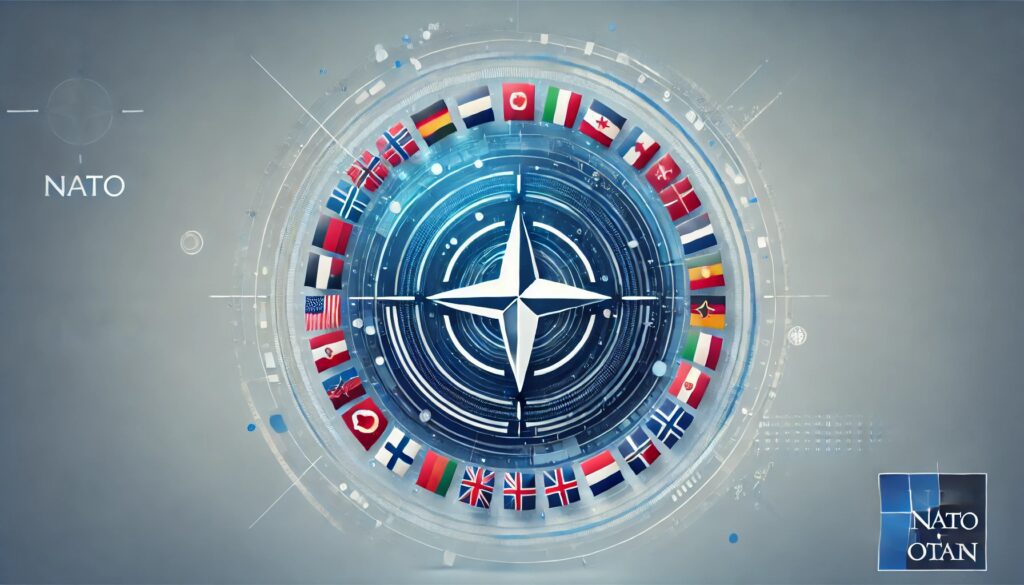
NATO’s AI Strategy: Driving Innovation and Ensuring Ethical Use
Revolutionizing Defense with AI
NATO is at the forefront of integrating artificial intelligence (AI) into its defense strategies. This forward-thinking approach is designed to bolster technological superiority and enhance security measures across member nations. Let’s explore how NATO is revolutionizing its defense capabilities through strategic investments, partnerships, and ethical AI deployment.
Investing in AI is crucial for maintaining our technological edge and ensuring the security of our member nations. Our commitment to ethical standards in AI development sets a precedent for responsible use.
— Jens Stoltenberg, NATO Secretary General
Strategic Investments and Partnerships
Financial Commitments
NATO has committed a substantial €1 billion to enhance capabilities in AI, space, and robotics. This significant investment underscores the alliance’s commitment to modernizing its defense infrastructure. By focusing on emerging technologies, NATO aims to counter new threats and maintain its technological edge.
Defense Innovation Accelerator for the North Atlantic (DIANA)
DIANA plays a pivotal role in driving innovation within NATO. By collaborating with private and public sectors, DIANA focuses on developing “deep technologies” like AI, cyber, 5G, hypersonic, and autonomous systems. With expanded testing sites in 28 out of 32 NATO countries, DIANA fosters widespread innovation and capability development, ensuring that NATO stays ahead in the technological race.
AI Certification and Ethical Standards
AI Certification Standard
NATO’s Data and Artificial Intelligence Review Board (DARB) is crafting an AI certification standard. This standard ensures that AI applications adhere to NATO’s Principles of Responsible Use, emphasizing governability, traceability, and reliability. By setting these standards, NATO builds trust among stakeholders and guarantees ethical AI deployment.
Principles of Responsible Use
Established in 2021, NATO’s Principles of Responsible Use guide AI development and application. These principles stress accountability, traceability, and compliance with international laws and ethical norms. This framework prevents misuse and promotes responsible, transparent use of AI technologies.
NATO’s AI initiatives, including the Defense Innovation Accelerator for the North Atlantic (DIANA), are pivotal in driving technological advancements and fostering collaboration across sectors.
— General André Lanata, Supreme Allied Commander Transformation
Tactical and Operational Applications
Military Applications
AI is being piloted in various military applications, such as cyber defense, climate change monitoring, and imagery analysis. These technologies enhance situational awareness, improve decision-making, and optimize resource allocation. For instance, AI-driven imagery analysis provides real-time intelligence, crucial for operational planning and threat assessment.
Countering Adversary AI
To counter adversaries’ AI capabilities, NATO is developing advanced systems. This includes countermeasures against unmanned aircraft systems (UAS) and enhanced missile defense capabilities. By expanding AI reliance for intelligence, surveillance, and reconnaissance, NATO improves operational efficiency and response times.
Addressing AI-related Threats
Disinformation and Soft-War Operations
AI is a double-edged sword in modern warfare. It plays a significant role in propaganda and disinformation campaigns. NATO is actively countering AI-augmented malign influence operations that manipulate public opinion and destabilize societies. With adversaries like Russia and China demonstrating advanced AI capabilities, this focus is crucial for maintaining stability.
Future Directions
Expansion of AI Capabilities
As AI technologies evolve, NATO continuously adapts its strategies. This includes exploring new AI applications, refining ethical standards, and enhancing collaboration with member nations and external partners. The goal is to create a robust and agile defense framework capable of addressing the dynamic challenges of modern warfare.
Integrating Advanced Decision Support
AI-Enabled Decision Support
A significant aspect of NATO’s AI strategy is improving decision-making processes through AI. This involves integrating AI to enhance data analysis, prediction, and strategic planning, allowing for more informed and timely decisions in complex scenarios. AI’s ability to process vast amounts of data quickly and accurately is a game-changer for operational planning and threat assessment.
Balancing Human-AI Collaboration
Effective implementation requires a balanced approach where AI supports but does not replace human judgment. This synergy enhances decision-making while maintaining accountability and ethical oversight. By leveraging AI’s strengths in data processing and combining it with human expertise, NATO ensures robust and ethical strategic decisions.
Conclusion
NATO’s comprehensive approach to AI involves substantial financial investments, the establishment of ethical standards, and the development of advanced military applications. By fostering innovation and ensuring responsible use, NATO aims to maintain its technological edge and enhance its collective defense capabilities in an increasingly complex geopolitical landscape.
Explore More:
- NATO’s AI Initiatives and Investments
- DIANA: Driving Innovation in Defense
- Ethical Standards in AI
- Calibrating NATO’s Vision for AI-Enabled Decision Support





